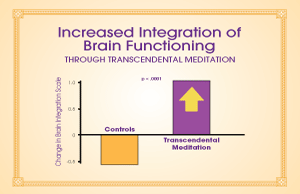Stilling the Mental Chatter

A writer friend recently asked me if the TM technique would still the mental chatter that never shuts off in her brain. I said “yes,” because quieting the mind is a direct result of transcending. And it’s definitely been my own experience.
Most self-help books will advise you to control negative thoughts—or any incessant brain noise such as obsessing about what other people say or do or what they think about us. Yet as we all know, it’s not easy to control thoughts. They pop up whether we want them to or not. Whether we’re obsessing on something embarrassing we just said or did, or worse, about something sad or tragic that has happened to us, negative thoughts seem to get louder the more we try to turn them off.
Certainly stress and anxiety play a role in perpetuating negative mind-chatter. And while it’s becoming more and more clear that women are more vulnerable to stress than men, it’s still not completely clear why this is so. One study published in the online journal Molecular Psychiatry suggested that the female brain is more sensitive to low levels of a stress hormone called corticotropinreleasing factor (CRF) produced at times of anxiety.
“It has long been recognized that women have a higher incidence of depression, post-traumatic stress disorder, and other anxiety disorders,” said study researcher Rita Valentino, a behavioral neuroscientist at The Children’s Hospital of Philadelphia. “But the underlying biological mechanisms for that difference have been unknown.”
Whatever the reasons, it’s clear that women need a secret weapon to lessen the stress. Life is not slowing down. As women expand their presence in the workforce and even in combat, more than ever before, we need to find a way to lessen anxiety and stress in daily life.
I feel lucky that this technique that I adopted as a daily practice in my youth, which infuses my day with more calm and inner serenity, has turned out to be backed up by science. Now, 40 years after I started meditating, the volume of research indicates that the TM technique is a tried and true way to reduce anxiety. In fact, there have been so many studies on anxiety reduction and the TM technique that a meta-analysis (a survey of all the studies) published in the Journal of Clinical Psychology found that the TM technique is significantly more effective in reducing trait anxiety than concentration or contemplation and other self-help techniques.
Practicing TM has helped reduce my own mental chatter to a startling degree. It didn’t happen overnight—but it happened in an easy and spontaneous way. I find myself naturally able to focus on the task at hand without the peanut gallery inside my mind piping up. And the sheer number of negative thoughts has dramatically diminished. It’s not that I’m controlling negative thoughts better—they just aren’t showing up the way they used to.
And that’s something to tell my friends about.
About the Author
Linda Egenes writes about green and healthy living and is the author of six books, including The Ramayana: A New Retelling of Valmiki’s Ancient Epic—Complete and Comprehensive, co-authored with Kumuda Reddy, M.D.
More Posts by Linda
- Tired and Burned Out? Transcendental Meditation Can Help: An Interview with Dr. Nancy Lonsdorf, MD
- Worried About the Future? Six Ways to Calm Your Anxiety
- What Do You Carry in Your Self-Care Tool Kit?
- Five Strategies for Family Caregivers
- From the Streets to College in Four Months: The Communiversity of South Africa Empowers Underserved Youth in Cape Town





